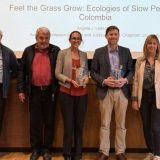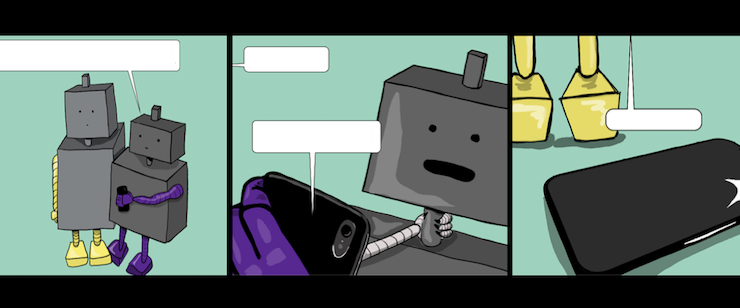
Folklore in the Digital Imagination Sam Risak Wins Graduate Student Research Showcase Award
May 22, 2020
In 2019, “the Momo Challenge,” swept the internet. The viral hoax and internet urban legend was shared on messaging services like WhatsApp, goading children and adolescents into acts of extreme violence and horror. Authorities worldwide have not confirmed that any physical harm resulted, yet still school administrations on several continents have issued warnings about the Momo Challenge and repeated common advice about Internet safety.
 The face of this challenge was, “Momo,” a devilish bird-lady, an ubume, or “birthing-woman,” a supernatural monster in Japanese folklore that has appeared in tales as early as the 12th century. The choice of this image also became a puzzle for Sam Risak ‘20 (Dual MA English/MFO Creative Writing) to unravel. Why do we continue to have a fixation on such monsters from yesteryear when we have, as Risak aptly notes “more than enough realized horrors in the world.”
The face of this challenge was, “Momo,” a devilish bird-lady, an ubume, or “birthing-woman,” a supernatural monster in Japanese folklore that has appeared in tales as early as the 12th century. The choice of this image also became a puzzle for Sam Risak ‘20 (Dual MA English/MFO Creative Writing) to unravel. Why do we continue to have a fixation on such monsters from yesteryear when we have, as Risak aptly notes “more than enough realized horrors in the world.”
In her award-winning thesis, “Tracing the Transmutations of the Ubume: A Digital Environmental Humanities Project,” Risak grappled with why traditional elements of folklore endure in our contemporary digital landscapes.
She argues that these monsters’ ability to survive not just the eons, but to appear at the forefront of our digital mediums tells us much about the fears of today’s youth; namely, their concerns about climate change. Risak pairs her research with that of literary critic Frederick Jameson who argues that populations use myths as “imagined solution[s]” to otherwise “unresolvable social contradictions,” or, in other words, as false solutions to problems that may feel too large to approach.
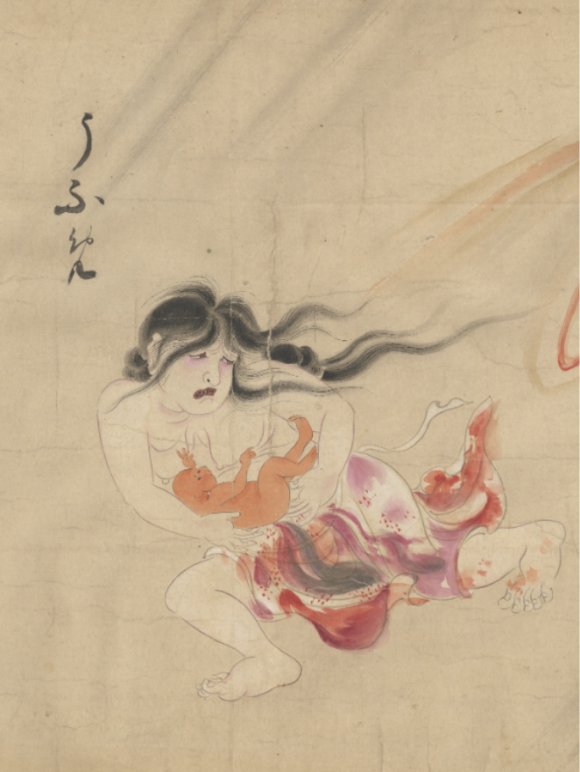 It seems only fitting Risak’s research – handling ancient lore in new media – would need to be presented in an innovative way. “That’s not to say that I don’t appreciate the role of literature as a discipline, I do!” Risak clarifies. “I just wanted to find a way to bridge some of its ideas to those who wouldn’t have otherwise encountered them –which is exactly what Digital Humanities allowed me to do.”
It seems only fitting Risak’s research – handling ancient lore in new media – would need to be presented in an innovative way. “That’s not to say that I don’t appreciate the role of literature as a discipline, I do!” Risak clarifies. “I just wanted to find a way to bridge some of its ideas to those who wouldn’t have otherwise encountered them –which is exactly what Digital Humanities allowed me to do.”
Eschewing the traditional research and thesis format, Risak’s thesis is hosted on Scalar, a free, open-source authoring and publishing platform that is designed to make it easy for authors to write long-form, born-digital scholarship online. One of Scalar’s foundational concepts is using digital means not just for presentation of research, but as a platform for increased interconnectedness and intersections across fields in emerging digital landscapes that allow for faster, clearer connections.
“By making my thesis a website, I can share the link and don’t have to rely on people finding it through a database that they may or may not know how to use.”
Using Scalar, Risak analyzed what previous “imagined solutions” the ubume may have offered to those facing the consequences of environmental degradation. She displayed her conclusions through a combination of text-based research and a comic she created to bridge non-academic audiences with her research.
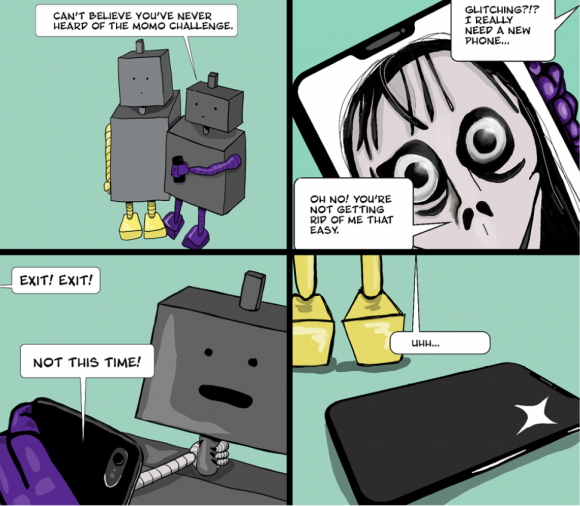
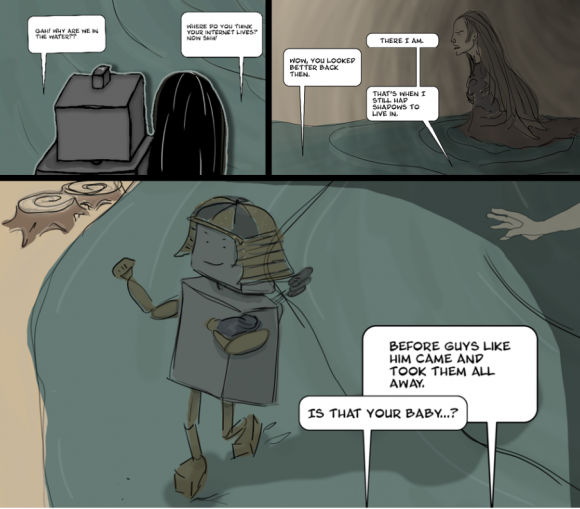
Risak was introduced to digital humanities in ENG 584 – Introduction to Digital Humanities, which familiarizes students with emerging technologies for text-based inquiry, research and expression. In addition to gaining an overview of the digital humanities, students apply what they learn to the design of their own digital projects. Wilkinson is among the numbers of colleges nationwide turning their attention to digital humanities, and incorporating tenants into classwork and theses.
Risak was one of five winners in this year’s university-wide Graduate Student Research Showcase for her project titled, “Tracing the Transmutations of the Ubume: A Digital Environmental Humanities Project,” and was awarded with a $1,000.00 prize.
All posters including Risak’s will remain on the VPGE website for viewing until the end of May. We hope you’ll check it out and enjoy learning more about the graduate student research community within Wilkinson!

